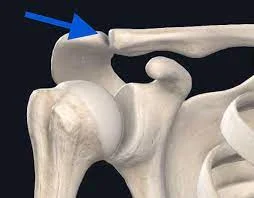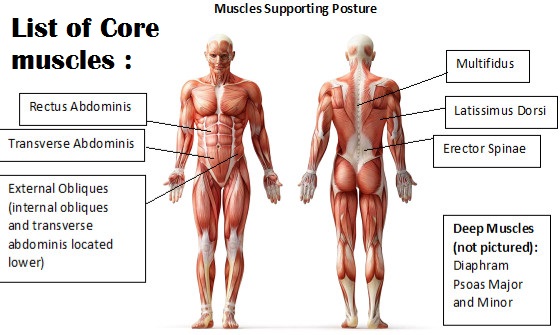are Physical Therapy Doctors?
No, physical therapists are not medical doctors. They are healthcare professionals who specialize in physical therapy, which involves the assessment, diagnosis, and treatment of individuals with physical impairments or disabilities. Physical therapists typically hold a Doctor of Physical Therapy (DPT) degree, which is a professional doctorate in the field of physical therapy.
While they may be referred to as “doctor” due to their doctoral degree, it is important to note that they are not medical doctors (physicians) who specialize in the diagnosis and treatment of diseases. Physical therapists work collaboratively with other healthcare professionals, including physicians, to provide comprehensive care to their patients.
Physical therapy and the role of physical therapists:
- Education and Training: Physical therapists undergo extensive education and training to become licensed practitioners. In the United States, they typically complete a bachelor’s degree followed by a Doctor of Physical Therapy (DPT) program, which typically takes three years to complete. DPT programs include coursework in anatomy, physiology, biomechanics, exercise physiology, neuroscience, and clinical practice. After graduation, physical therapists must pass a licensure examination to practice legally.
- Scope of Practice: Physical therapists are experts in evaluating and treating musculoskeletal and movement disorders. They work with patients of all ages and help address a wide range of conditions, including sports injuries, orthopedic problems, neurological disorders, chronic pain, post-surgical rehabilitation, and cardiopulmonary conditions. Their goal is to improve patients’ physical function, mobility, and overall quality of life.
- Treatment Techniques: Physical therapists employ various techniques and modalities to assist in their patients’ recovery. These may include therapeutic exercises, manual therapy (such as joint mobilization and soft tissue techniques), electrical stimulation, ultrasound, heat or cold therapy, assistive devices, and patient education. They develop personalized treatment plans based on individual patient needs and goals.
- Collaboration with Healthcare Professionals: To give patients comprehensive care, physical therapists collaborate closely with other medical specialists like doctors, surgeons, nurses, and occupational therapists. They often collaborate in interdisciplinary teams to ensure the best outcomes for their patients. Physical therapists may receive referrals from physicians for specific conditions or injuries, and they also communicate and coordinate treatment plans with other healthcare providers involved in a patient’s care.
- Preventive Care and Health Promotion: Physical therapists not only treat existing conditions but also play a crucial role in preventive care and promoting overall health and wellness. They provide guidance on injury prevention, ergonomic techniques, posture correction, and exercise programs tailored to individual needs. By addressing potential issues before they become more severe, physical therapists help individuals maintain optimal physical function and prevent future problems.
It’s important to note that while physical therapists are highly trained and knowledgeable in their field, they are not qualified to diagnose medical conditions. If a physical therapist suspects an underlying medical issue, they may refer the patient to a physician for further evaluation and diagnosis.
Why Physical Therapists are writing Doctors ahead of their names?
Physical therapists are sometimes referred to as “doctors” because they hold a doctoral degree in physical therapy (DPT). The use of the term “doctor” is in reference to their academic qualification, similar to individuals who hold a Doctor of Philosophy (Ph.D.) or Doctor of Medicine (M.D.) degree. It is important to note that physical therapists use the title “doctor” to signify their level of education and expertise in their specific field, but it does not imply that they are medical doctors (physicians).
The inclusion of “doctor” in the title recognizes the advanced level of education and clinical training that physical therapists have undergone to provide high-quality care to their patients. It is a way to acknowledge their professional achievements and expertise in the field of physical therapy. However, physical therapists typically clarify their professional title as “Doctor of Physical Therapy” or use the abbreviation “DPT” to avoid any confusion with medical doctors.
In a clinical setting, physical therapists often introduce themselves by their first name and professional title to establish a rapport with patients and ensure clear communication. They work collaboratively with other healthcare professionals, including medical doctors, to provide comprehensive care to patients, each contributing their expertise within their respective domains.
What is a Physical Therapist?
A physical therapist is a healthcare professional who specializes in evaluating, diagnosing, and treating individuals with physical impairments, disabilities, or movement-related conditions. They are experts in the field of physical therapy and work with patients of all ages, helping them improve their physical function, mobility, and overall quality of life.
Physical therapists are trained to assess patients’ musculoskeletal, neuromuscular, and cardiovascular systems to identify the underlying causes of their physical limitations or difficulties. Based on their evaluation, they develop personalized treatment plans and interventions to address specific conditions and help patients regain or improve their functional abilities.
The role of a physical therapist includes:
- Evaluation and Assessment: Physical therapists conduct thorough assessments to understand patients’ medical history, physical condition, and specific concerns. They perform tests, measurements, and clinical observations to evaluate patients’ strength, range of motion, balance, coordination, posture, and functional abilities.
- Diagnosis and Prognosis: Physical therapists use their clinical expertise to analyze assessment findings and make diagnoses related to patients’ physical impairments or movement dysfunctions. They also provide a prognosis, estimating the potential for recovery and setting realistic goals for treatment.
- Treatment and Intervention: Physical therapists design and implement individualized treatment plans to address patients’ specific needs. They utilize a variety of techniques and modalities such as therapeutic exercises, manual therapy, electrotherapy, heat or cold therapy, and assistive devices. Treatment goals may include pain reduction, improvement of mobility and strength, restoration of function, and prevention of further injury.
- Patient Education: Physical therapists educate patients about their condition, treatment options, and self-care strategies. They provide guidance on exercises, proper body mechanics, ergonomics, and lifestyle modifications to optimize patients’ overall well-being and prevent future problems.
- Rehabilitation and Recovery: Physical therapists play a vital role in post-surgical or injury rehabilitation. They work closely with patients to guide them through the recovery process, promoting healing, reducing pain and inflammation, restoring strength and flexibility, and facilitating the return to normal activities.
- Prevention and Wellness: Physical therapists are involved in preventive care, promoting healthy lifestyles, and injury prevention. They provide guidance on exercise programs, ergonomic techniques, and strategies to maintain optimal physical function and prevent future problems.
- Physical therapists often work in various healthcare settings, including hospitals, clinics, rehabilitation centers, sports facilities, and private practices. They collaborate with other healthcare professionals, such as physicians, nurses, occupational therapists, and speech therapists, to provide comprehensive care to patients.
It’s important to note that physical therapists are licensed professionals and must meet specific educational and licensing requirements in the country or state in which they practice.
In which country, Physical therapists use Doctors in their name?
In some countries, physical therapists may use the title “doctor” as part of their professional designation. This can vary depending on the regulations and practices of each country. Here are a few examples:
In the United States:
In the United States, physical therapists who have earned a Doctor of Physical Therapy (DPT) degree are referred to as “doctors” due to their doctoral-level education. They may use the title “Dr.” before their name, signifying their professional degree. However, they typically clarify their professional title as “Doctor of Physical Therapy” or use the abbreviation “DPT” to differentiate themselves from medical doctors.
In Canada:
In Canada, physical therapists who hold a Doctor of Physical Therapy (DPT) degree can use the title “doctor.” They may use the prefix “Dr.” before their name, along with their professional title of “Physiotherapist” or “Physical Therapist.”
It’s important to note that the use of the title “doctor” by physical therapists does not imply that they are medical doctors (physicians) but rather denotes their doctoral-level education and expertise in the field of physical therapy. The specific regulations regarding the use of titles may vary by country and may be subject to local guidelines and professional associations.
In India
In India, physical therapists do not typically use the title “doctor” as part of their professional designation. The common professional title used by physical therapists in India is “Physiotherapist.” They are referred to as “Physiotherapists” or “Physical Therapists” in both professional and public settings.
In India, the educational qualification for physical therapists is a Bachelor of Physiotherapy (BPT) degree, which is a four-year undergraduate program. Some individuals may pursue post-graduate degrees or specialized certifications in specific areas of physical therapy, but the title “doctor” is not commonly used.
It’s important to be aware of the specific regulations and practices in each country, as they may vary regarding the use of professional titles.
In Australia
In Australia, physical therapists who hold a Doctor of Physiotherapy (DPT) degree may use the title “doctor” as part of their professional designation. The Doctor of Physiotherapy is a clinical doctorate program offered by some universities in Australia.
Physical therapists in Australia are commonly referred to as “Physiotherapists” or “Physical Therapists.” However, those who have obtained a DPT degree can use the title “Dr.” before their name, signifying their doctoral-level education in the field of physiotherapy.
It’s important to note that the use of the title “doctor” by physical therapists in Australia is specific to those who have completed a Doctor of Physiotherapy program. Physical therapists with other degrees, such as a Bachelor or Master of Physiotherapy, do not typically use the title “doctor.”
As with any country, it’s advisable to refer to the specific regulations and guidelines of the Australian health authorities and professional organizations for accurate and up-to-date information regarding professional titles and designations.
In the United Kingdom (UK)
In the United Kingdom (UK), physical therapists are commonly known as “physiotherapists” and do not typically use the title “doctor” as part of their professional designation. The professional title used in the UK is “Physiotherapist” or “Chartered Physiotherapist.”
In the UK, the entry-level qualification for physiotherapists is a Bachelor of Science (BSc) degree in Physiotherapy, which is typically a three or four-year undergraduate program. Some individuals may pursue post-graduate degrees or specialized certifications in specific areas of physiotherapy, but the use of the title “doctor” is not common practice for physiotherapists.
It’s important to note that the specific regulations and practices regarding professional titles can vary over time and may be subject to guidelines and recommendations from professional bodies and regulatory authorities. It’s always advisable to refer to the current guidelines of the relevant UK health authorities and professional organizations for the most accurate and up-to-date information.
Summary
In summary, physical therapists are healthcare professionals who specialize in physical therapy and are not medical doctors (physicians). They are trained to evaluate, diagnose, and treat individuals with physical impairments or movement-related conditions. Physical therapists typically hold a Doctor of Physical Therapy (DPT) degree, which is a professional doctorate in the field of physical therapy. However, the use of the title “doctor” varies depending on the country.
In some countries like the United States and Canada, physical therapists with a DPT degree may use the title “doctor” to denote their doctoral-level education and expertise. In countries like India and the United Kingdom, physical therapists typically do not use the title “doctor” and are referred to as “physiotherapists” or “physical therapists.”
It’s important to note that the use of the title “doctor” by physical therapists is specific to their professional qualification and should not be confused with medical doctors. Physical therapists work collaboratively with other healthcare professionals and utilize various treatment techniques to improve their patients’ physical function, mobility, and overall well-being.




